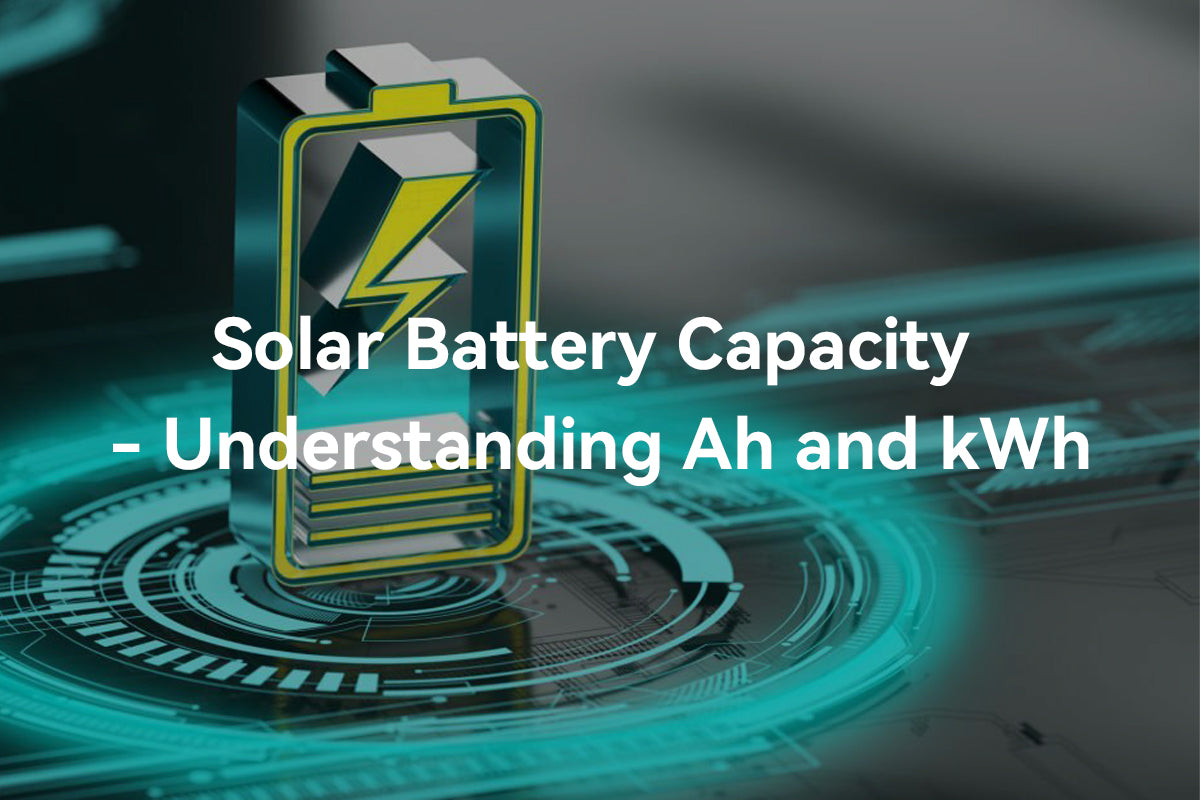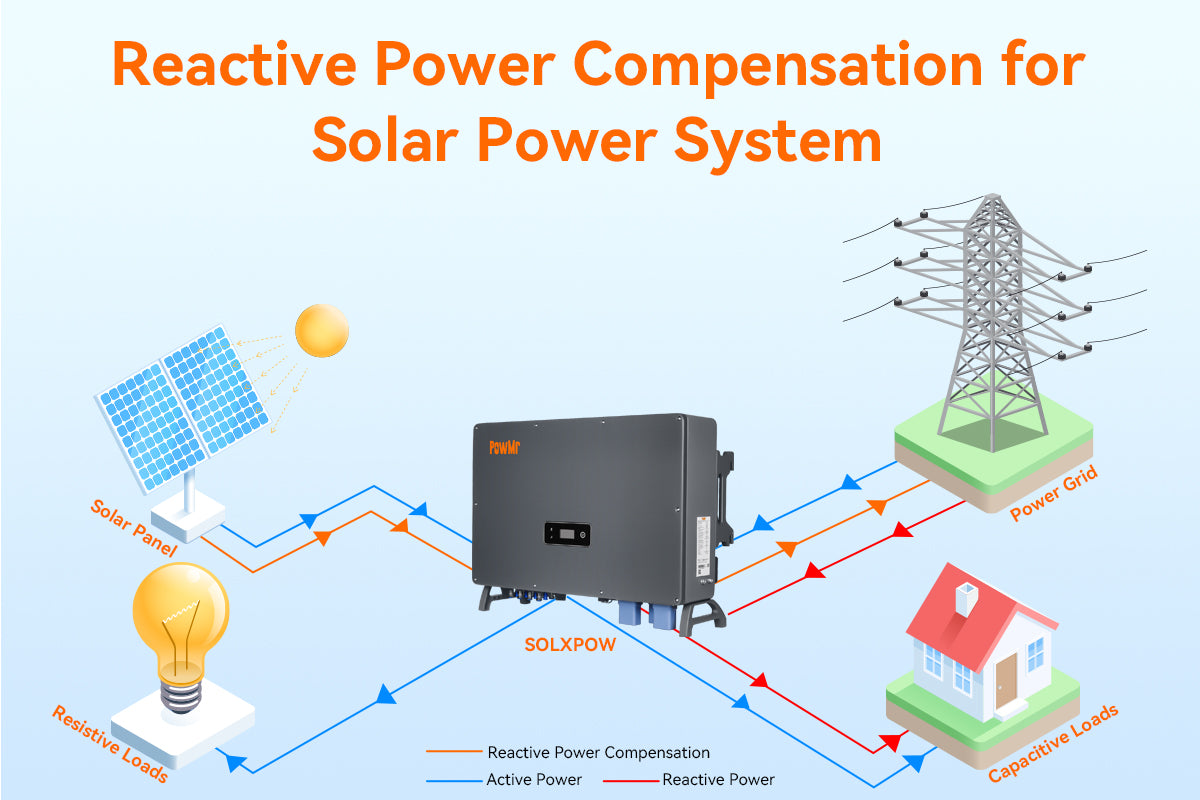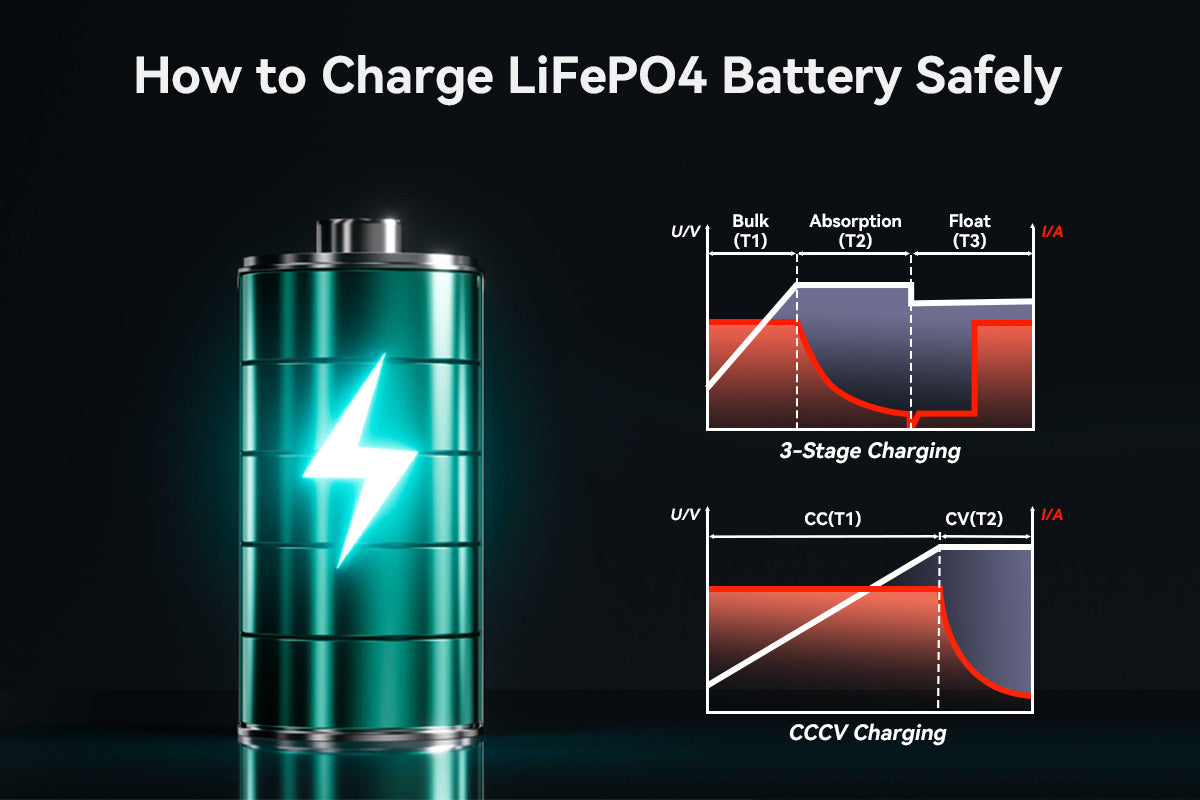การเปลี่ยนแปลงทั่วโลกไปสู่แหล่งพลังงานที่ยั่งยืนชัดเจนมากกว่าที่เคย โดยพลังงานแสงอาทิตย์เป็นผู้นำในการเปลี่ยนแปลงนี้ แผงโซลาร์เซลล์เปลี่ยนแสงอาทิตย์ให้เป็นไฟฟ้า แต่ความท้าทายอยู่ที่ การเก็บพลังงานนี้เพื่อใช้งาน ในช่วงที่มีแสงแดดน้อย นี่คือจุดที่แบตเตอรี่โซลาร์มีบทบาทสำคัญ ทำหน้าที่เป็นอ่างเก็บน้ำที่เก็บและปล่อยพลังงานตามความต้องการ.
เมื่อคุณ เลือกแบตเตอรี่สำหรับระบบพลังงานแสงอาทิตย์ของคุณ คุณอาจพบกับตัวย่อเช่น Ah และ kWh คำถามที่มักจะเกิดขึ้นในใจของคุณคือ "Ah หมายถึงอะไร?"
ในบทความนี้ เราจะคลี่คลายความลึกลับเบื้องหลังหน่วย Ah และ kWh สำรวจความสำคัญของพวกมันในด้านการเก็บพลังงานจากแสงอาทิตย์ และอธิบายวิธีการแปลง Ah เป็น kWh ทำให้คุณสามารถ กำหนดจำนวนแบตเตอรี่ที่คุณต้องการ ตามบิลค่าไฟฟ้าของคุณได้ง่ายขึ้น.
Ah หมายถึงอะไรในแบตเตอรี่?
แอมป์-ชั่วโมง (Ah) เป็นหน่วยของประจุไฟฟ้าที่ใช้กันทั่วไปเพื่ออธิบายความจุในการเก็บพลังงานของแบตเตอรี่ หนึ่งแอมป์-ชั่วโมงเท่ากับ ปริมาณประจุที่ถูกถ่ายโอน โดยกระแสไฟฟ้าหนึ่งแอมป์ในระยะเวลาหนึ่งชั่วโมง ความจุ Ah ของแบตเตอรี่บ่งบอกว่าแบตเตอรี่สามารถรักษากระแสไฟฟ้าของแอมป์ที่กำหนดได้นานแค่ไหน.
ประเภทต่าง ๆ ของแบตเตอรี่ เช่น แบตเตอรี่ตะกั่ว-กรดและแบตเตอรี่ลิเธียมไอออน มีความหนาแน่นพลังงานและคุณสมบัติทางเคมีไฟฟ้าที่แตกต่างกัน ส่งผลให้มีความจุ Ah ที่แตกต่างกัน ยิ่งคะแนน Ah สูงเท่าไหร่ แบตเตอรี่ก็สามารถให้พลังงานได้มากขึ้นเท่านั้น สิ่งนี้มีความสำคัญโดยเฉพาะในระบบพลังงานแสงอาทิตย์แบบออฟกริด ซึ่งการมีสำรองพลังงานที่เชื่อถือได้และเพียงพอเป็นสิ่งจำเป็น.
kWh หมายถึงอะไรในแบตเตอรี่?
กิโลวัตต์-ชั่วโมง (kWh) เป็นหน่วยของพลังงานที่ใช้ในการวัดปริมาณไฟฟ้าที่ใช้หรือผลิต ในอัตราหนึ่งกิโลวัตต์ (หน่วยของพลังงาน) ต่อชั่วโมง ในบริบทของแบตเตอรี่โซลาร์เซลล์ kWh จะถูกใช้เพื่อวัดความจุพลังงานรวมของแบตเตอรี่ ซึ่งให้มุมมองที่กว้างขึ้นเกี่ยวกับความสามารถของมัน.
ในแง่ที่ง่ายที่สุด กิโลวัตต์-ชั่วโมงเป็นหน่วยวัดพลังงาน ซึ่งบรรยายถึงปริมาณพลังงานไฟฟ้าที่ถูกใช้หรือผลิตในหนึ่งชั่วโมงที่อัตราหนึ่งกิโลวัตต์ ในทางกลับกัน แอมป์-ชั่วโมง (Ah) เป็นหน่วยวัดประจุไฟฟ้า ซึ่งแสดงถึงปริมาณไฟฟ้าที่ไหลผ่านวงจรในหนึ่งชั่วโมง ความสัมพันธ์ระหว่างพวกเขา ขึ้นอยู่กับแรงดันไฟฟ้า เนื่องจากพลังงานเท่ากับกระแสไฟฟูที่คูณด้วยแรงดันไฟฟ้า.
วิธีการแปลง Ah เป็น kWh
ความสัมพันธ์ระหว่าง Ah และ kWh เป็นสิ่งสำคัญในการประเมินประสิทธิภาพและอายุการใช้งานของแบตเตอรี่โซลาร์เซลล์ Ah เป็นการวัดกระแสไฟฟ้า และ kWh เป็นการวัดพลังงานตามเวลา การแปลงระหว่างหน่วยเหล่านี้เกี่ยวข้องกับ การคูณ แรงดันไฟฟ้าด้วยค่าการจัดอันดับ Ah และ การหาร ด้วย 1000.
สูตรในการแปลง Ah เป็น kWh
kWh = Ah*โวลต์/1000
Wh = Ah*โวลต์
เพื่อให้เห็นภาพชัดเจนขึ้น มาพิจารณา แบตเตอรี่ 51.2V ที่มีความจุ 100Ah:
- kWh = 100 * 51.2V/1000= 5.12 kWh
การแปลงนี้มีความสำคัญต่อการประเมินศักยภาพการเก็บพลังงานของแบตเตอรี่โซลาร์เซลล์อย่างถูกต้อง
เพื่อช่วยให้เห็นภาพความจุพลังงานของแบตเตอรี่โซลาร์ที่แตกต่างกัน เราได้จัดทำ ตารางที่แปลง Ah เป็น kWh สำหรับความจุ Ah ที่หลากหลายสำหรับ ระบบแบตเตอรี่ 12V, 24V และ 48V.
| อาฮ์ | kWh ที่ 12V | กิโลวัตต์ชั่วโมงที่ 24 โวลต์ | กิโลวัตต์ชั่วโมงที่ 48 โวลต์ |
|---|---|---|---|
| 100อา. | 1.2kwh | 2.4kwh | 4.8kwh |
| 150อา.ม. | 1.8kwh | 3.6kwh | 7.2kwh |
| 200อา.ม. | 2.4kwh | 4.8kwh | 9.6kwh |
| 280อา. | 3.36kwh | 6.72kwh | 13.44kwh |
| 300อา.ม. | 3.6kwh | 7.2kwh | 14.4kwh |
| 400อา.ม. | 4.8kwh | 9.6kwh | 19.2kwh |
ฉันสามารถผสมแบตเตอรี่ Ah ที่แตกต่างกันในแบบอนุกรมหรือขนานได้ไหม
การเชื่อมต่อแบตเตอรี่แบบอนุกรมหรือขนาน มีความยืดหยุ่นในการปรับแรงดันไฟฟ้าหรือความจุของระบบแบตเตอรี่เพื่อตอบสนองความต้องการที่แตกต่างกัน อย่างไรก็ตาม สิ่งสำคัญคือแบตเตอรี่ต้องมี สเปคเดียวกัน ซึ่งหมายถึงแรงดันไฟฟ้าและความจุที่เท่ากัน.
ไม่ควร ผสม แบตเตอรี่ที่มีค่าความจุ Ah ที่แตกต่างกันในรูปแบบขนานหรืออนุกรม.
เมื่อ ผสม แบตเตอรี่ที่มี ความจุ (Ah) แตกต่างกันในแบบอนุกรมหรือขนาน ปัญหาที่พบบ่อยที่สุดคือ แบตเตอรี่บางตัวชาร์จได้เร็วกว่าแบตเตอรี่ตัวอื่น เมื่อแบตเตอรี่ที่ชาร์จเร็วเต็มแล้ว ตัวชาร์จจะหยุดทำงาน ทำให้ แบตเตอรี่ที่ชาร์จช้ากว่าอยู่ในสภาพชาร์จไม่เต็ม.
โดยเฉพาะในกลุ่มแบตเตอรี่ที่มี Ah แตกต่างกันเชื่อมต่อกันแบบขนาน ความ แตกต่างของแรงดันไฟฟ้า ระหว่างแบตเตอรี่ทำให้แบตเตอรี่ที่มีแรงดันไฟฟ้าสูงสุดชาร์จแบตเตอรี่ที่มีแรงดันไฟฟ้าต่ำสุด พยายามที่จะ สร้างสมดุลภายในระบบ.
เพื่อรองรับความต้องการที่หลากหลาย, PowMr มี การออกแบบที่ซ้อนกันได้ ที่สะดวกสบายสำหรับแบตเตอรี่ ซึ่งติดตั้งง่าย ประหยัดพื้นที่ และสวยงาม.
สำหรับระบบแบตเตอรี่ที่มีความจุ Ah ขยายได้ รุ่น POW-LIO51400-16S แบตเตอรี่ LiFePO4 แบบซ้อน 51.2V ช่วยให้คุณสามารถซ้อนแบตเตอรี่ได้สูงสุดถึง

For high-voltage energy storage, the POW-HVB-10 high voltage การจัดเก็บแบตเตอรี่ โมดูลแต่ละตัวให้พลังงาน 50Ah เมื่อเชื่อมต่อแบบอนุกรม ค่า Ah จะยังคงเท่าเดิม แต่เหล่านี้ โมดูลสามารถเพิ่มแรงดันไฟฟ้า จาก 204.8V (10kWh กับ 2 โมดูล) สูงสุดถึง 512V (20kWh กับ 5 โมดูล).

ทั้งสองโซลูชันมาพร้อมกับ ระบบจัดการแบตเตอรี่ (BMS) ที่ติดตั้งมาในตัว ซึ่งช่วยให้ประสิทธิภาพ ยืดอายุการใช้งาน และความปลอดภัยอยู่ในระดับสูง ทำให้คุณมั่นใจในการลงทุนพลังงานแสงอาทิตย์ของคุณ.
โพสต์ที่เกี่ยวข้อง:
แบตเตอรี่ HV กับแบตเตอรี่ LV อันไหนเหมาะกับระบบพลังงานของคุณ



